Feng Yan’s creations are rooted in the use of images to provide viewers with a field for the opening of awareness. Through his meticulous, objective work, images become the coda to a long process of thought that in the end emerges as an image. The artist does not see himself as a photography artist, but instead as more of a sculptor or painter. In a contemporary field awash with conceptual art, Feng Yan bestows images with unique dignity and texture, and provides a contemporary society encircled by graphic garbage with a rare, precious pure land.
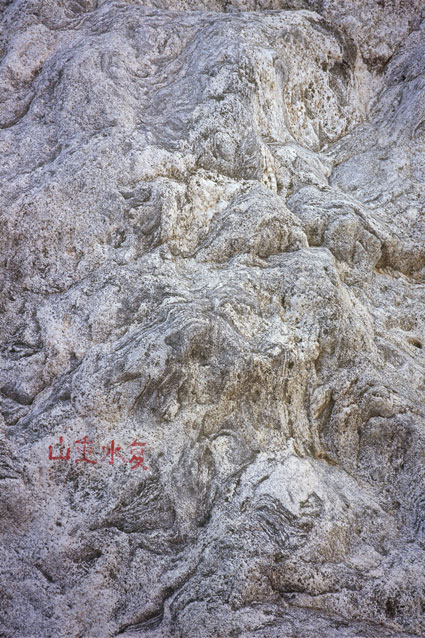
Zhongnan Mountain Rock 06 204x136cm, 2014
Feng Yan’s artworks call to mind the art of Marcel Duchamp, expressing true wisdom in what at first appears to be an afterthought. Facing these works, our thoughts are drawn to a work of Duchamp’s entitled Pharmacy. In this artwork, Duchamp added two points, one red and one blue, onto a reproduction print of a denuded landscape. The landscape was a popular schema in the Rococo period, going hand in hand with those composers of garden melodies Mozart and Schubert. With the industrial revolution, the dukes and princes packed up their suitcases and left their castles for the cities, and commissioned painters to commemorate their childhood memories of country estates in oil. In Boucher, Poussin, Corot, Pissarro, Manet, Monet and Van Gogh, the natural landscape became a cultural transition layer from the 17th to 19th centuries, representing a lost aristocratic taste. In Courbet’s 1855 The Painter’s Studio, the landscape implied the boundary between two entirely different social classes. If Courbet’s landscape alludes to the awakening of the artist’s sense of social responsibility, then Duchamp’s landscape confronts mankind’s avarice and brutality towards nature since the rise of technology after the Renaissance, including the violence against the human body as a natural object. Mankind uses seemingly rational techniques to manage and judge the properties of nature, but has given up on patience, faith and imagination. The position of a people depends on the advancement of their application of technology. In science, mankind can let loose the wildness of human nature. Today’s technology has truly become a battleground, as the illusory settings that extend from it use increasingly convenient electronic products to envelop our brains. Duchamp found mankind’s modernist desire to rebuild the world through scientific knowledge laughable, and his works are permeated with mockery of modern man’s means of production and survival. Just as Pharmacy shows, all of man’s knowledge comes from nature, but that is also where man is least knowledgeable.
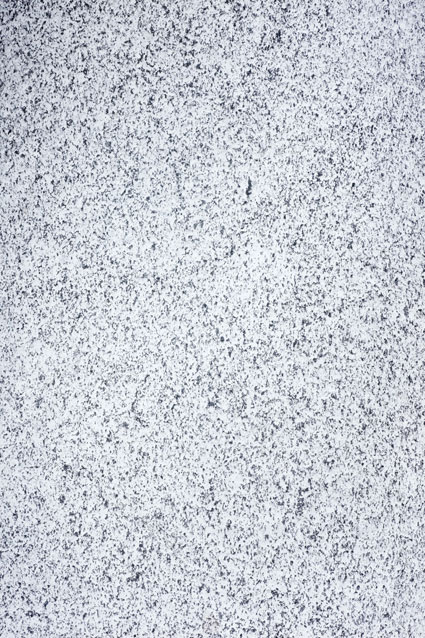
Zhongnan Mountain Rock 05 204x136cm, 2014
From his early works such as Black Stool, Feng Yan’s art has demonstrated that he is not just an artist, but more importantly a talented thinker and observer. The focus on objects from the collective era calls to mind the work of German photographers Bernd and Hilla Becher, while the respective artists’ work in different locations seems as if they are facing two different times. Feng Yan’s talent is to find rich visual constructs within cold silence, presenting his scenes within the appropriate fields. Just as a Peking Opera set designer uses simple methods to reveal a setting, he creates a stage that links past and present. This perception of presence is achieved through rigorous visual perspective. In his creations, Feng Yan repeatedly uses an enlarger to adjust the image to the perfect size for the wall, with the resulting image size creating a visual distance that constrains the viewer, just like the optimal distance from the stage. This visual distance encapsulates a certain psychological distance. Feng Yan requires a simple and precise image to correctly construct a temporal setting. It does not require too many elements, but the shifts of these elements will come to form an overarching field, and the exhibition site can be understood as a restoration of a knowledge field.
For this reason, the images are no longer objects to be consumed and forgotten. Instead, they form a kind of pathological analysis of a situation. Feng Yan never tires of extracting fragments from situations. These fragments allude to a hypnosis of the times, like a short series of notes extracted from a clever lullaby. That is why Feng Yan’s artworks must be placed within a field in order to gain their vital energy and complete their exorcism of reality. Looking at individual artworks on the computer screen, or on paper, feels tiring, and that is the result of the loss of this field.
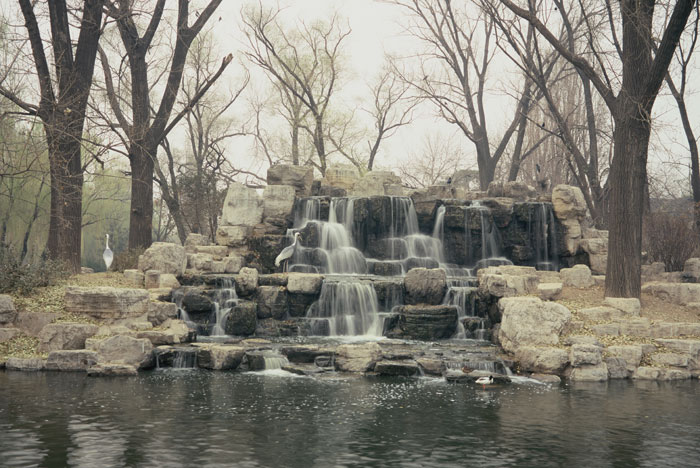
Zoo Pond 02 130x192cm, 2006
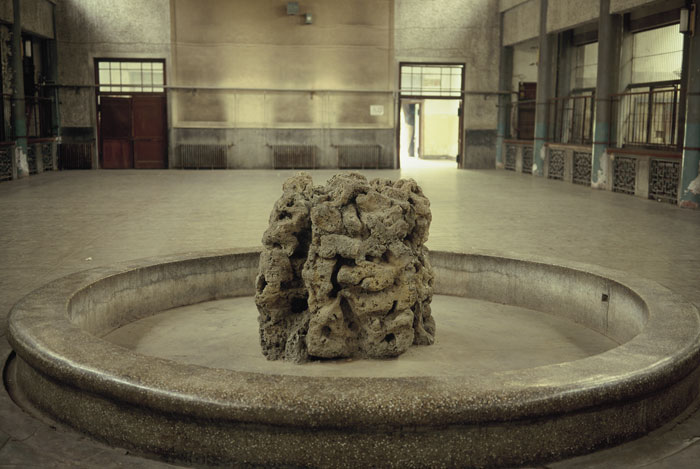
Zoo Pond 01 110x163cm, 2006
In another regard, the symbolism and visual sense of form in Feng Yan’s images pushed his creations, for a time, to the boundaries of Minimalism and abstraction. For instance, in the Psychedelic Bamboo series, the artist keenly grasped the inner order and structure of the Western world, using purer linguistic logic to construct a visual experience with more solidity than literary depiction. After returning to China, he used the conceptuality of the writer to bring his art back into reality, preserving story elements in the image for his viewers. He is like a scientist in the laboratory, his observations of the world at once brought under the microscope to read various cross sections, leaving notes of his observations, as well as arranging his observational data to provide a clear view of the philosophical knowledge gleaned from their order and structure. As an artist, Feng Yan has mentioned in interviews that it no longer matters whether he is a photographer. To a certain extent, his artworks are anti-photography. These works are no longer the product of novelty-seeking and aesthetics, nor are they records of certain definitive moments in time. They have become cultural displays within the space of reality. In the recent Restless Landscapes series, the “traditions” that permeate everyday rock ornaments, fake landscapes in zoos and the natural scenery of Mount Zhongnan are constantly mutating. Some artworks have been magnified to the size of a common window in a house, while others have been given the proportions of Fan Kuan’s Travels in Xishan, but most of the image content serves as multiple cross sections between tradition and reality. The works are not aimed at constructing some classic image in the traditional sense, but instead at searching for the true field occupied by the Chinese people after several hundred years of modernization. In today’s urban civilization marked by rapid development, rapid consumption and rapid pollution, there has emerged a relationship of contradiction and paradox between traditional culture and development. This paradox has obscured our spiritual objectives. In this cultural retrospective across time and space, the mystery and crisis of nature we see expressed in such works as Tang Mausoleum Long Grass are one and the same as tradition. Feng Yan has merely preserved the information of an era as a rational, objective documentarian. His landscapes are like a spell that opens the doors of awareness.
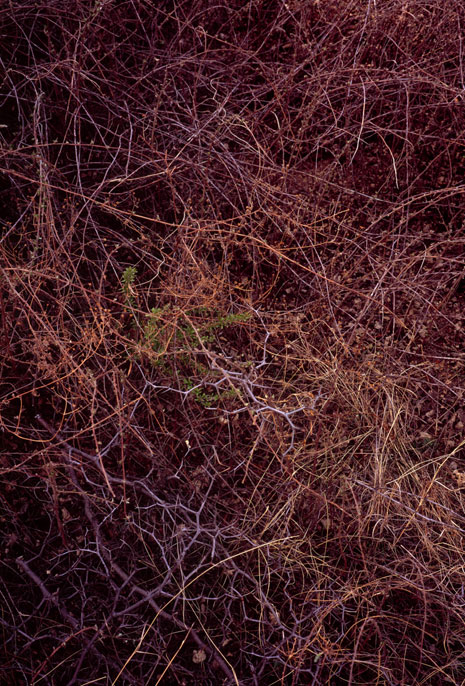
唐陵深草02 Tang Mausoleum Long Grass 02 201x134cm, 2015
|
|




